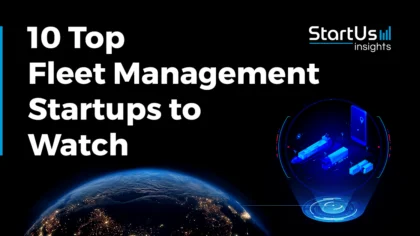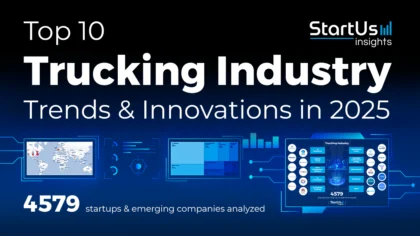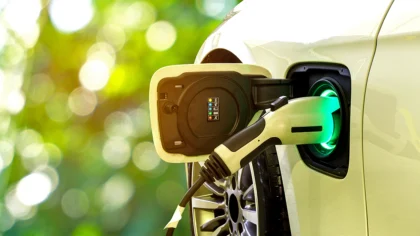Accelerate Productivity in 2025
Reignite Growth Despite the Global Slowdown
Executive Summary: What are the Top 10 Electric Mobility Trends in 2026 & Beyond?
Rapid technological innovation, shifting regulatory landscapes, and rising demand for sustainable transportation solutions advance the electric mobility sector. The following trends are driving this transformation:
- EV Charging Network: There are more than 5 million public chargers across the globe. Rapid growth in electric vehicle (EV) charging networks resolves range anxiety and increases consumer confidence in EVs.
- AI Integration: Enables predictive maintenance, automated load balancing, and real-time optimization of charging schedules based on grid demand, energy prices, and user preferences. AI-powered battery management systems improve efficiency by 15%.
- Fast Charging Technology: Improves the long-distance travel feasibility of EVs. This popularity pushes the market share of fast chargers to 50.7% in 2025.
- Fleet Management Software: Monitors vehicle health, optimizes charging patterns, and calculates carbon footprints. It reduces emissions by 40%.
- Policy and Regulatory Developments: New policy frameworks provide tax relaxations and incentives that accelerate the electrification of the mobility sector. Governments also plan to phase out fossil-fuelled vehicles by 2030.
- Scaling Commercial EV: Operational savings, maintenance reduction, and sustainability branding benefits encourage delivery, municipal, and service sectors to adopt electric mobility for their operations. The scaling of commercial EV fleets reduces noise pollution by 50% in urban areas.
- Last-Mile Delivery: E-commerce growth and eco-conscious regulations drive increased adoption of EVs, cargo bikes, and autonomous systems in last-mile delivery. This momentum is set to propel the last-mile delivery market to USD 446 billion by 2034.
- Autonomous Driving Integration: Autonomous EVs with their real-time hazard perception and sensor fusion technologies enhance the safety and operating costs of electric fleets. It reduces unsafe incidents by 88%.
- eVTOL (Electric Vertical Take-Off and Landing): Provides congestion-free urban transport that is environmentally sustainable and enables rapid point-to-point mobility. Over 700 eVTOL models are currently in development across the globe.
- Alternate Battery Technologies: Enhance the charging capabilities of EVs while avoiding dependence on traditional battery chemistries like Li-ion. Some new batteries offer a 750-mile range for a 10-minute charge.
Read on to explore each trend in depth – uncover key drivers, current market stats, cutting-edge innovations, and electric mobility leading innovators shaping the future.
Frequently Asked Questions
1. What is the future of electric vehicles in the world in 2030?
Electric car sales are expected to reach around 65% of total vehicle sales globally by 2030.
2. What are the benefits of e-mobility?
E-mobility offers high energy efficiency, lower emissions, and improved performance, with strong consumer and policy support.
3. How big is the electric mobility market?
The global electric mobility market is forecasted to reach USD 4.4 trillion by 2032 at a compound annual growth rate (CAGR) of 28.7%.
Methodology: How We Created the Electric Mobility Trend Report
For our trend reports, we leverage our proprietary StartUs Insights Discovery Platform, covering 7M+ global startups, 20K technologies & trends plus 150M+ patents, news articles, and market reports.
Creating a report involves approximately 40 hours of analysis. We evaluate our own startup data and complement these insights with external research, including industry reports, news articles, and market analyses. This process enables us to identify the most impactful and innovative trends in the electric mobility industry.
For each trend, we select two exemplary startups that meet the following criteria:
- Relevance: Their product, technology, or solution aligns with the trend.
- Founding Year: Established between 2020 and 2025.
- Company Size: A maximum of 200 employees.
- Location: Specific geographic considerations.
This approach ensures our reports provide reliable, actionable insights into the electric mobility innovation ecosystem while highlighting startups driving technological advancements in the industry.
Innovation Map outlines the Top 10 Electric Mobility Trends & 20 Promising Startups
For this in-depth research on the Top Electric Mobility Trends & Startups, we analyzed a sample of 5100+ global startups & scaleups. The Electric Mobility Innovation Map created from this data-driven research helps you improve strategic decision-making by giving you a comprehensive overview of the electric mobility industry trends & startups that impact your company.
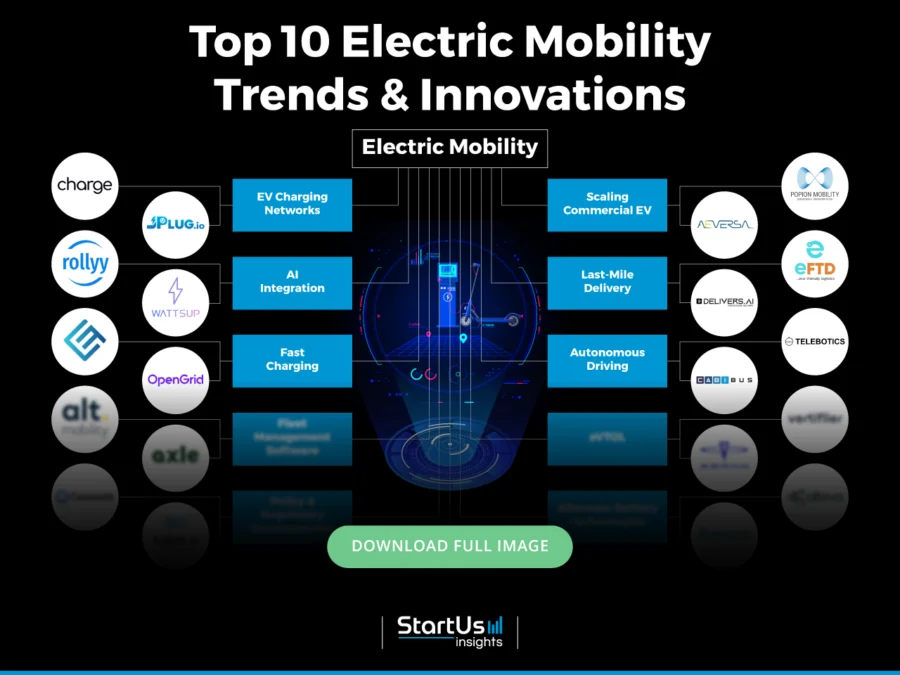
Tree Map reveals the Impact of the Top 10 Electric Mobility Trends
Based on the Electric Mobility Innovation Map, the Tree Map below illustrates the impact of the Top 10 Electric Mobility Trends. The expansion of robust EV charging networks and the adoption of fast-charging technologies are making electric vehicles more practical.
AI integration enhances everything from predictive maintenance and charging optimization to advanced autonomous driving capabilities. Fleet management software streamlines the electrification of commercial fleets, with last-mile delivery and urban mobility services increasingly transitioning to electric and autonomous vehicles.
Policy and regulatory changes across global markets are accelerating the shift to cleaner transport, encouraging local manufacturing, and promoting sustainable practices. The scaling of commercial EV operations and the growth of innovative segments like eVTOL underscore the sector’s momentum.
Alternative battery technologies such as solid-state and sodium-ion are set to further increase efficiency, safety, and supply chain resilience.
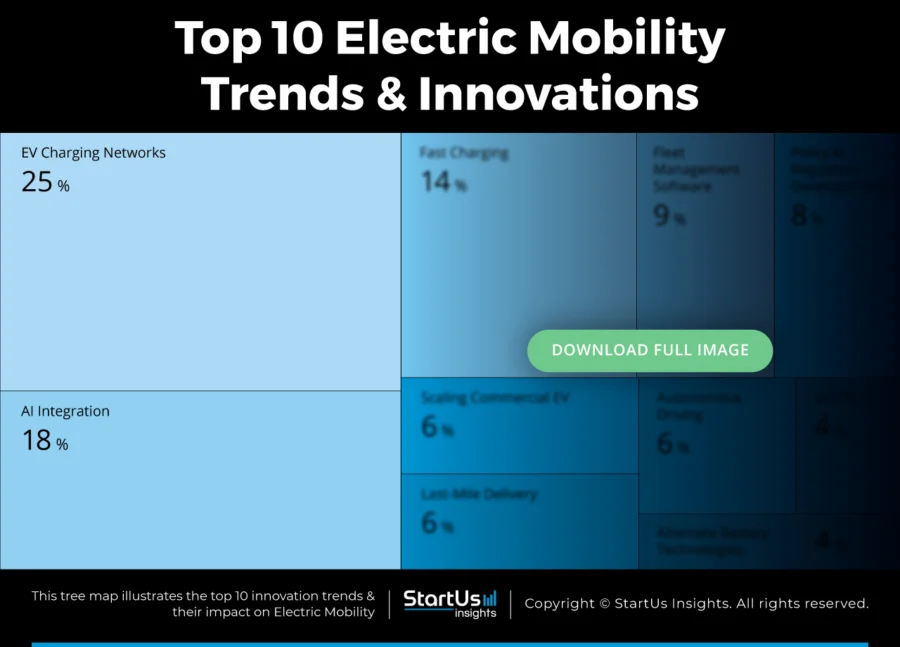
Global Startup Heat Map covers 20 Electric Mobility Startups & Scaleups
The Global Startup Heat Map showcases the distribution of 5100+ exemplary startups and scaleups analyzed using the StartUs Insights Discovery Platform. It highlights high startup activity in India and the USA, followed by the UK. From these, 20 promising startups are featured below, selected based on factors like founding year, location, and funding.
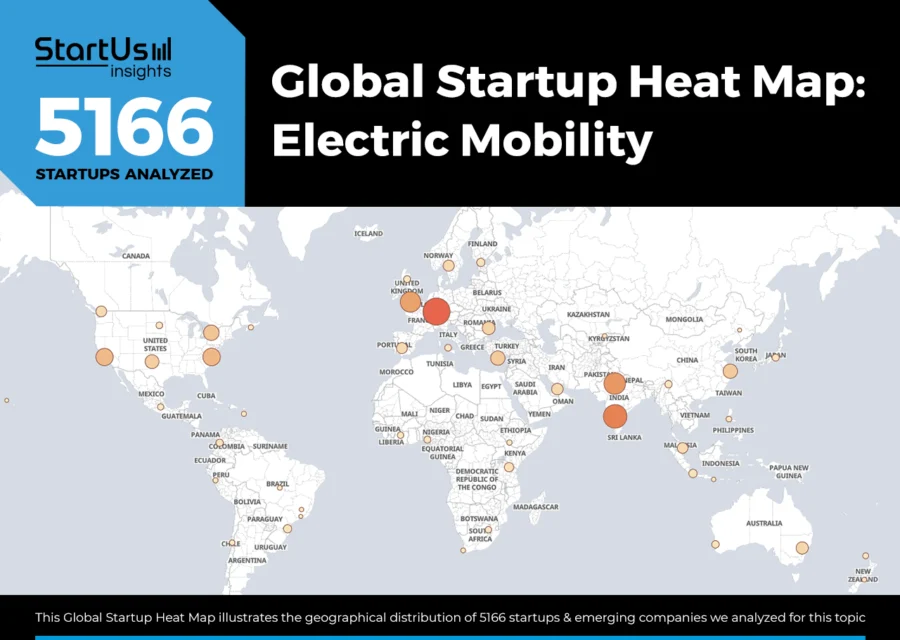
Want to Explore Electric Mobility Innovations & Trends?
Top 10 Emerging Electric Mobility Trends [2026 and Beyond]
1. EV Charging Network: Infrastructure Market USD 113.4 B by 2032
Strong government support, a surge in EV adoption worldwide, and technological developments in network management contribute to the fast growth of EV charging networks. Increasing charger accessibility, dependability, and scalability accelerates the adoption of electric mobility. This is evident from the high EV sales figures from countries like Norway, Sweden, and Netherlands that hold the higher per-capita charger counts.
The Biden administration allocated USD 521 million to add roughly 9200 outlets in the USA to anchor the first nationwide fast-charging lanes. Further, the global EV charging infrastructure market is valued at USD 36.5 billion in 2025. It is projected to surpass USD 398.8 billion by 2034 at a compound annual growth rate (CAGR) of 30.4% from 2025 to 2034. This indicates a rising interest in the establishment of charging networks.
Major cities commit to enhancing their EV infrastructure. For example, Amsterdam has over 4800 charging stations to support their goal of being carbon neutral by 2050. Another example is Paris having over 2200 charging points, which makes EV charging more effective than refuelling a petrol or diesel vehicle.
New centralized platforms manage these networked charging stations with real-time monitoring, remote diagnostics, and control. This improves operational efficiency and reduces downtime, which is critical as networks scale.
The open charge point protocol (OCPP) guarantees smooth functioning across various hardware and applications. But operators continue to report recurring problems, which frequently necessitate firmware updates and customizations.
Additionally, there are developments in software that facilitate preventative maintenance, quick repairs, and high uptime measurements, such as the US federal requirement for 97% uptime. It also drives improvements in the reliability of charging networks.
Charge’s API coordinates EV Charging Networks
French startup Charge offers an application programming interface (API) that allows software applications to plug directly into the EV ecosystem. It connects software to charging stations, vehicles, and payments. This automates the entire charging journey for users with context-aware workflows.
Charge’s AI-powered unified platform reduces the complexity of EV charging networks and unlocks new revenue streams. Embedding charging, payments, and session tracking into a single app avoids switching between networks or juggling receipts.
JPlug supports Residential Charging Networks
JPlug is a Canadian startup that offers software to simplify EV charging in buildings. The startup’s solution tackles the complexity, cost, and managerial challenges associated with installing and operating EV charging infrastructure in multi-unit residential buildings. The hardware-agnostic software balances power distribution among chargers to prevent overloads and to deliver faster charging.
JPlug reduces installation and infrastructure costs by eliminating the need for submeters and current sensors. The software monitors the charging network 24/7 while ensuring reliability. It also maximizes the number of chargers that allow charging at the same time. The software optimizes charging schedules based on demand and grid conditions. This allows property managers, electrical contractors, and real estate developers to set up residential charging networks aligning with sustainability goals.
2. AI Integration: AI-based Battery Health Adds 20% EV Value
AI-based software evaluates vehicle data, traffic patterns, and charging to enable a better charging experience. For example, Tesla‘s supercharger network guides drivers to stations with the shortest wait times and dynamically modifies power delivery to avoid overload.
Shell reduces system stress and optimizes charging schedules by integrating renewable energy sources, balancing power loads, and using AI for smart grid management. Both of these examples demonstrate the use of AI to optimize the energy and operational aspects of electric mobility.
Further, AI-driven systems enable dynamic pricing, where charging costs fluctuate based on demand. This distributes usage more evenly and reduces peak-hour congestion. Load balancing ensures efficient power allocation across stations to prevent grid overload and minimize power disruptions.
AI solutions from NV Energy identify certain customer user profiles and then engage only customers with high-value baseline charging behavior. This enables a load shift that is 2.5 to 10 times greater than usual.
Additionally, machine-learning (ML) algorithms reduce supply-chain forecasting errors and cut downtime, while generative AI trims R&D cycles and testing time. Mercedes-Benz‘s multi-million-euro stake in Apptronik humanoid robots shifts repetitive and hazardous jobs off workers.
ML models also predict thermal-runaway events in lithium-ion packs before they cascade, which averts fires and recalls. Thus, an AI-enabled battery health management boosts perceived EV value by 20%, according to OEMs.
AI-powered predictive maintenance solutions also identify potential failures before they occur, which reduces downtime and maintenance costs. Real-time monitoring and analytics allow for proactive interventions that extend the lifespan of charging infrastructure and enhance reliability for users.
Rollyy automates Vehicle Charging
Finnish startup Rollyy‘s automated charging process optimizes charging schedules to maximize uptime. The real-time data processing through AI-led video analysis keeps track of operations. The autonomous system reduces labor costs and improves resource allocation.
Rollyy also features a digital dashboard that provides insights into charging patterns and energy consumption to optimize charging station operations further. The system also takes into account user behavior and performs predictive analysis on this data to determine charging frequency. The platform then uses this information to balance electricity consumption.
WattsUp improves EV Charger Predictive Maintenance
US-based startup WattsUp offers a software platform that implements ML-driven predictive maintenance to enhance the reliability of EV chargers. The platform enables real-time monitoring and anomaly detection through its proprietary AI models. It reduces cascading failures, and the automated and prescriptive diagnostics minimize the lead time and labor costs to identify failure.
Following the identification of potential failures, WattsUp’s platform automatically orders the necessary parts. This ensures the components are available before the predicted failure event. The platform also coordinates the labor schedule, which ensures the smooth running of the charger fleet.
3. Fast Charging Technology: A 5-Minute Charge Gives 400 km Range
Traditional concerns about running out of power become manageable when drivers know they will quickly recharge at strategically located stations.
McKinsey research reveals that current EV owners prioritize convenience and speed over cost. For instance, 42% of respondents chose the shortest charging time as the most important factor.
Ultra-fast charging capabilities now exceed 350 kW power delivery. It enables 10-minute charging from 10% to 80% battery capacity. Companies like BYD demonstrated a 400 km range by charging for just 5 minutes using advanced 1000 kW systems. These capabilities address the time convenience gap between electric and conventional vehicles.
Battery technology innovations are equally important. CATL’s Shenxing cells achieved a range of 520 km with 5 minutes of charging. This advancement in battery chemistry and thermal management enables vehicles to accept ultra-high charging rates without compromising safety or longevity.
The deployment of ultra-fast charging networks along major transportation corridors is enabling long-distance EV travel. This addresses one of the final barriers to mass adoption.
Ultrafast Chargers provides DC Fast Chargers
Indian startup Ultrafast Chargers designs DC fast chargers that support fast charging ranging from 60 kW to 240 kW. These chargers aid high-voltage EVs up to 1000VDC and make them suitable for fleets, public charging stations, and heavy-duty vehicles.
The charger’s redundant power architecture ensures high uptime with automatic failover. It also features power-sharing technology that optimizes utilization by charging two vehicles simultaneously.
The startup integrates OCPP, which makes the charger compatible with payment platforms and energy management systems. The powder-coated stainless steel construction also makes it suitable for both indoor and outdoor use.
OpenGrid offers Custom Fast Chargers
US-based startup OpenGrid offers custom hardware and software solutions for EV fast chargers. These chargers support both combined charging system type 1 (CCS1) and North American charging standard (NACS). The offering allows commercial property owners or managers to choose between a ground lease or revenue share model. OpenGrid then installs its battery-backed EV chargers that require minimal infrastructure disruption.
On commissioning, OpenGrid partners with anchored grocery stores to attract EV drivers. This creates more revenue for tenants and improves the property value. The convenience of fast chargers streamlines the entire setup and improves customer satisfaction.
4. Fleet Management Software: AI Fleet Management Cuts Down Emissions By 40%
Fleet management software serves as the digital backbone of the electric mobility industry It is driven by the need for operational efficiency, cost reduction, and sustainability. As EV adoption accelerates, fleet operators face mounting pressure to maximize vehicle uptime, optimize energy use, and comply with increasingly stringent environmental regulations. Advances in telematics, internet of things (IoT), and AI enable real-time, data-driven decision-making that saves costs for fleet operators.
Modern fleet management systems provide visibility into every facet of EV operations. It continuously monitors battery state-of-charge (SoC), state-of-health (SoH), energy consumption patterns, and vehicle location. This empowers fleet managers to make informed decisions in real-time. The integration of global positioning system (GPS) tracking, voltage and current sensors, and temperature monitoring creates a holistic operational picture. This ensures maximum utilization of vehicles at peak efficiency.
AI-driven fleet management systems analyze vast streams of real-time data to optimize routes based on traffic conditions, weather, charging station availability, and individual vehicle energy profiles. Such AI-driven routing reduces energy consumption by up to 31.4% compared to traditional methods. The result is not only lower operational costs but also improved service levels and reliability.
UPS adopted an advanced fleet management system to optimize its EV operations. These systems reduced fuel costs by up to 50% compared to traditional diesel trucks.
In Shenzhen, real-time battery and charger data eliminated range anxiety for drivers. It pushed its fleet electrification segment to 99%.
The impact of these technologies extends beyond cost and efficiency. A real-world case study in Lisbon, Portugal, demonstrated that AI-powered fleet management reduces emissions by up to 40%, improves delivery times by 15-20%, and enhances overall energy efficiency by 10-25%.
AltMobility performs Fleet Lifecycle Management
AltMobility is an Indian startup that offers electric vehicle leasing and lifecycle management solutions for B2B fleets, individual drivers, and corporate employees. Its platform, FleetOS, offers integrated EV asset management that manages vehicle selection, leasing, service, and repairs. It also supports real-time fleet monitoring and charge management.
The AltMobility platform supports a full spectrum of vehicle categories, including intelligent connected vehicles, enabling the hassle-free electrification of fleets. FleetOS also performs real-time vehicle tracking and provides alerts on vehicle condition. Additionally, it runs preventive diagnostics to assess any potential for failure and initiates roadside assistance activities in case of distress calls.
Axle creates an AI-powered Fleet Back Office Companion
US-based startup Axle is a fleet back-office companion that uses AI to aid fleet technicians, managers, and executives. The voice-enabled data entry system allows technicians to dictate the issues. Axle’s AI understands these issues and instantly transforms into clean, coded, and system-ready data.
As a result, the companion minimizes paperwork. The platform also provides a simple interface that plugs into existing fleet or workshop management systems.
5. Policy and Regulatory Developments: Germany Grants 10-Year BEV Tax Cut
The introduction of stricter emission standards makes it difficult for automakers to stick to fossil-powered vehicles. The lower emission thresholds create a technical challenge that increases development costs. These costs, in turn, demonstrate that electric vehicles are the economically viable alternative. This is evident from major manufacturers like Mercedes-Benz announcing that all of their newly launched vehicle architectures will be electric-only.
Further, governments worldwide in recent years introduced tax incentives and economic breaks to accelerate electric car manufacturing. For example, Germany offers a 10-year vehicle tax exemption to battery electric vehicles (BEVs) and fuel cell vehicles. The UK government also incentivizes EV purchases through grants of up to GBP 3750 for electric vehicles priced at or under GBP 37000.
Additionally, the Netherlands, through its Vamil scheme, allows investments in charging stations or electric vehicles to be written down to 75% in the first year.
Apart from these financial incentives, governing bodies like the EU are raising their greenhouse gas emission reduction ambitions from 40% to 55% in 2030. This will affect the internal combustion engine (ICE) registration ban.
Casawatt facilitates Electric Charging Reimbursements
French startup Casawatts simplifies reimbursement for home charging using vehicles and smart electric meters. The startup automatically records vehicle charging sessions and verifies that they took place at home. It generates a detailed receipt each month to simplify reimbursement management.
Casawatt accommodates all types of sockets and terminals without specific installation. The solution only accesses the data needed to certify each charge. In this way, the solution tracks recharges in real-time and enables transparency of reimbursements.
talet-e offers Retrofit Electrification
talet-e is an Italian startup that offers power kits to convert petrol-powered scooters into sustainable electric scooters. The startup’s process first involves disassembling the engine, transmission, tank, and exhaust. Then they install the electric kit with the motor and battery modules. talet-e ships old engine parts to companies specializing in the sustainable recycling of raw materials to avoid waste.
The retrofit process complies with Decree No. 141, which allows retrofitting vehicles belonging to classes L, M, and N1 with electrical retrofit systems. talet-e also takes care of the re-registration process, which includes an inspection by the motor vehicle inspectors.

6. Scaling Commercial EV: Commercial EV Market to Reach 250 B by 2030
Stringent emission standards and carbon neutrality targets compel commercial fleet operators to adopt electric alternatives. This is evident from the electric commercial vehicle market size, which is estimated to grow at a CAGR of 12.7% and reach USD 235.7 billion by the year 2034.
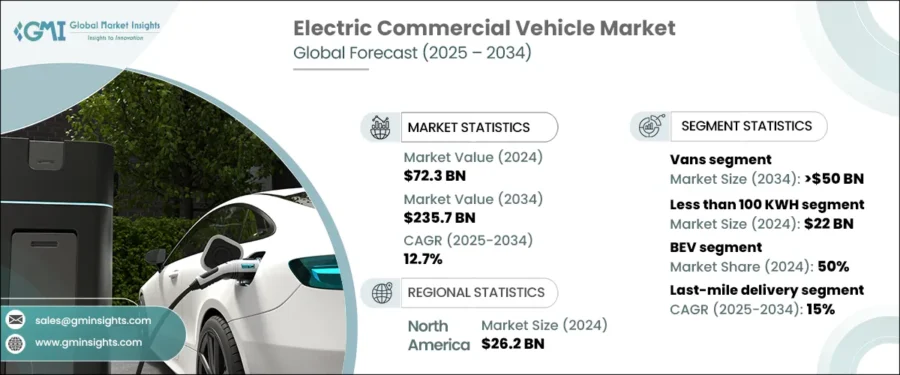
Credit: Global Market Insights
Further, urban air pollution concerns drive the momentum of the adoption of electric buses. Electric buses achieve a 90-95% reduction in nitrogen oxides (NOx) and particulate matter compared to diesel engines. They also offer a 50% reduction in noise pollution.
Fleet owners revealed a 90% higher likelihood of acquiring EVs in the next fleet expansion cycle. They attribute this to lower operational costs through reduced fuel and maintenance expenses.
One care facility in the US electrified its patient transfer fleet and reported a saving of USD 6500 per van each while providing 10 000 trips per month.
Additionally, developments in charging technology that improve accessibility to charging infrastructure and reduce the turnaround time eliminate range anxiety in commercial operations. Smart charging solutions also optimize operations by utilizing subsidized energy rates during off-peak times or when renewable energy production is highest. This allows commercial operators to cut charging expenses.
Fleet management platforms also synchronize vehicle charging with operational needs and schedules. This reduces downtime and maximizes the productivity of EV fleets.
Popion enables Battery Exchange for Commercial EVs
US-based startup Popion offers a battery-swapping charging solution for electric trucks and buses. The batteries at Popion serve as a distributed energy resource that stores the influx of renewable energy. The startup’s standardized modular battery packs fit a variety of buses and trucks. This creates an agnostic solution that operates and scales for all electric vehicles and equipment.
Popion also takes care of range anxiety by offering a higher range, which improves the total cost of ownership. It enables setting up zero-emission commercial fleets that match the diesel range and productivity.
Aeversa offers Scalable Commercial EV charging
Aeversa is a startup based in South Africa that provides EV charging solutions to simplify the electrification of commercial fleets. It allows fleet owners to buy or rent these chargers to suit their budget and experience. The startup’s proprietary software monitors and manages charging stations in real-time to increase uptime, minimize disruptions, and maximize productivity.
The data-driven energy consumption and charge session reporting optimizes fleet operations and costs. The platform also uploads data, including driving behavior, location, and charging needs, to allocate power intelligently. Aeversa’s products comply with local and international standards to ensure interoperability between multiple software and hardware.
7. Last-Mile Delivery: Amazon Deploys 10K EV Vans in 1 Year
Cities enact zero-emission zones and stricter urban emission standards. This results in the introduction of regulations that ban the registration of new diesel delivery vehicles within city limits. These regulations also restrict polluting vehicles from entering the city centers. Thus, it disrupts the urban logistics ecosystem and makes electric fleets the default choice to ensure compliance with emission norms.
Apart from government-enforced restrictions, the expansion of e-commerce, quick commerce, and food delivery demands a faster, more efficient, and environmentally responsible mode of last-mile delivery. For example, DHL announced plans to increase the share of EVs to 66% by 2030 in its last-mile delivery vehicle fleet. Amazon also announced the rollout of 10 000 electric vans in the US as part of its electrification strategy. They also plan to have at least 100 000 electric delivery vans by 2030.
Additionally, services like Uber Eats actively integrate autonomous robots for their delivery services. These robots not only offer a sustainable alternative to traditional delivery vehicles but also reduce traffic congestion and improve the safety of last-mile operations.
The reduction in operating costs also fuels the adoption of two-wheeled and three-wheeled delivery vehicles. According to Jassper Shipping, a logistics firm based in India, these vehicles offer a 55% reduction in operating costs.
Further, battery swapping and AI-driven route optimization projects electric delivery vehicles more operationally attractive. Lightweight and modular two- and three-wheelers offer range and cost advantages over traditional vehicles in short urban trips.
eFTD uses Swappable Batteries EVs
Nigerian logistics startup eFTD provides last-mile delivery service using electric motorcycles with swappable batteries. Its electric motorcycle, Zumi, is cheaper to maintain over time than gasoline counterparts due to lower running and maintenance costs. Additionally, the startup provides a mobile application that enables riders to execute orders quickly. The app offers real-time tracking and chat support to ensure the smooth delivery of parcels.
eFTD’s battery swapping stations allow riders to reduce the charging time of e-bikes. This avoids long interruptions during delivery runs and allows riders to take up more orders.
DELIVER.AI offers Autonomous Robots for Delivery
UK-based startup DELIVER.AI offers autonomous robots for faster, greener, and contactless last-mile delivery. The robot features AI capabilities and security systems that allow it to navigate effectively while keeping the package safe.
DELIVER.AI‘s robots integrate electric mobility into a small form factor. These lightweight vehicles perform the deliveries without requiring special charging facilities and operational assistance.
8. Autonomous Driving Integration: AVs Cut Accidental Injuries by 88%
Autonomous driving integration has seen growing popularity in recent years due to its safety benefits and convenience. A study conducted by Swiss Re on Waymo’s autonomous vehicles shows 88% fewer injuries reported than in human-driven cars. The improvements in safety standards allow governments to pursue autonomous vehicles as one of the solutions to road safety concerns.
The UK government announced USD 201 million in funding for the connected and automated mobility (CAM) Pathfinder program. Initiatives like these pave the way for safer and greener transport through clearer regulations, funded pilot projects, and subsidized supply chains for autonomous EVs.
Additionally, the rising positive outlook towards autonomous taxis as a safe and sustainable mode of urban mobility accelerates the adoption of autonomous EVs. Waymo reported delivering more than 250 000 robotaxi rides per week in the US, which indicates the public acceptance of driverless transport solutions.
In recent years, the cost of LiDAR and AI-based computing systems has dropped rapidly. This price decline removed the cost barriers that once kept autonomous driving limited to luxury EVs. Moreover, it allows automakers to integrate driver assistance features in their lower-end models.
Also, the systems enable new automotive equipment manufacturers to pursue the development of autonomy kits that further accelerate the transition to autonomous EVs. Supporting this, the non-profit Securing America’s Future Energy (SAFE) found that 58% of autonomous, light-duty vehicle retrofits and models are built over an electric powertrain.
Telebotics offers a Full-stack Autonomy Kit
Canadian startup Telebotics offers a plug-in autonomy kit that turns any light vehicle into an autonomous connected vehicle. Its AI platform, JetPack OS, includes vision, mapping, and secure over-the-air updates for the vehicle. The module delivers powerful graphics processing unit (GPU) processing while drawing only a few watts from the battery. This provides a longer range to micro-EVs with no bulky cooling hardware.
Telebotics integrates its full autonomy kit with software, calibrated sensors, and an Nvidia Jetson computing unit, which is compatible with a wide range of light electric vehicles. This enables businesses to adopt autonomous driving systems at their own pace while reducing capital expenditure (CAPEX) and environmental impact.
CabiBUS operates Autonomous Minibuses
CabiBUS is a Swedish startup offering shared door-to-door, autonomous electric mobility solutions for public transportation. The startup’s minibus offers 6 cabins with 3 doors on each side and is small enough to pass through narrow streets. It serves as an alternative to larger buses and trams by allowing users to order trips to their doorstep by telephone or through an app.
CabiBUS’s autonomous system reduces public transportation costs and also increases safety. The control center runs the buses, which avoids the need for level 5 autonomous devices and allows operation through a level 4 remote assistance system. The system also allows platooning, which enables the vehicles to travel with a minimum distance between them. It reduces energy consumption and street space.
9. eVTOL: 4800 eVTOLs Expected to be Operational by 2035
Metropolitan areas globally face increasing congestion challenges. eVTOLs offer bypass capabilities for ground transportation bottlenecks, which saves time for business travel and emergency service applications.
eVTOL’s zero-emission operation also aligns with urban air quality requirements and carbon reduction mandates. They also produce lower noise footprints compared to conventional helicopters. This enables operations in noise-sensitive urban environments.
The global eVTOL market is expected to reach nearly USD 1.16 billion with 4800 eVTOLs operational worldwide by 2035.
This is supported by improvements in battery energy density that extend range and payload capabilities. The advancements enhance the operational economics and commercial viability for urban air mobility applications. Moreover, the introduction of new composite materials also contributes to this by enabling the construction of lightweight aircraft.
According to the Vertical Flight Society (VFS), over 700 eVTOL concepts are in development worldwide. This indicates the rapid evolution and commercialization potential of the technology.
Emergency medical services stuck in traffic offer a prime use case, with proven willingness to pay more for faster response times.
Vertiflier improves Personal Air Mobility
Vertiflier is an Estonian startup that develops an ultralight eVTOL with multi-stage protection, redundancy, and emergency recovery systems. This allows users to fly it without a pilot’s license for operations in the USA.
Vertiflier features an advanced onboard flight computer and sensor that ensures precise landings on a wide variety of surfaces. The onboard system automatically adjusts to external conditions to keep the flight smooth and stable in changing weather conditions.
Zerog enhances Urban Air Mobility
Chinese startup Zerog develops eVTOLs that cater to urban air traffic, intercity traffic, and private flights. The startup’s tilt-rotor eVTOL, ZG-T6, is suitable for low-altitude traffic. It carries up to 6 people and claims a range of 300 km with a cruising speed of 250 km/h. ZG-ONE is the fixed multi-rotor eVTOL that focuses on low-altitude sightseeing, carrying 2 people.
Zerog’s eVTOL solutions follow a canard design at the front, which distributes power equally to provide greater lift for the whole machine. Further, the combination of a V-shaped tail and winglets provides partial lift while stabilizing the heading.
10. Alternate Battery Technologies: EU battery prices exceed China’s by 31%
Manufacturers and policymakers in the electric mobility sector target cost reduction, mitigation of raw-material risk, and increased energy density while selecting battery technologies.
This pursuit of superior performance and reduced environmental risk led to various alternative battery technologies to replace Li-ion batteries that dominate the industry. China dominates the Li-ion battery market with a price advantage over Europe and North America, where battery packs are 31% and 48% more expensive, respectively.
Solid-state batteries replace the liquid electrolytes found in conventional Li-ion batteries with ceramic-based solid electrolytes. These solid-state batteries offer higher energy density and equate to an extended EV range.
For example, Samsung announced a solid-state battery that delivers a 600-mile range, nine-minute rapid charging, and a 20-year lifespan. Similarly, Toyota’s solid-state battery prototype is expected to achieve up to 750 miles of range on a 10-minute charge.
Sodium-ion batteries are another battery technology gaining traction, with KPIT Technologies conducting field trials on electric three-wheelers. These sodium-ion batteries demonstrated 25-30% lower costs than Li-ion batteries, with cycle life ranging between 3000 and 6000.
Alteva develops Ultralight Battery for Air Mobility
German startup Alteva provides lightweight, high-performance batteries for air mobility, road-based transportation, and heavy-duty machinery. The startup’s lightweight carbon material offers high energy density and long cycle life.
Further, Alteva’s active materials utilize widely available machinery, which allows rapid scaling of production in existing manufacturing facilities. Similarly, its production process utilizes sustainable raw materials, which avoids harmful heavy metals.
Ampoxe offers Recyclable Solid-state Vehicle Batteries
Ampoxe is a UK-based startup that provides solid-state batteries for challenges across the electric mobility sectors, including automotive, marine, and aviation. The startup’s batteries are chemistry-agnostic and highly recyclable.
Ampoxe’s solid-state batteries prioritize safety by mitigating the flammability risk associated with traditional Li-ion batteries. This ensures reliable performance in diverse operating conditions.
Discover all Electric Mobility Trends, Technologies & Startups
The rapid evolution of electric mobility is setting the stage for a cleaner, smarter, and more connected future of transportation. Innovations in charging, like vehicle-to-grid systems that allow bidirectional flow of energy, reduce the operating costs of EVs.
Further ultra-fast and wireless charging technologies reduce the hassle of the charging process. All such solutions move the sector beyond its early inflection point into a new era of mass-market relevance.
The Electric Mobility Trends & Startups outlined in this report only scratch the surface of trends that we identified during our data-driven innovation & startup scouting process. Identifying new opportunities & emerging technologies to implement into your business goes a long way in gaining a competitive advantage.
![Discover the Top 10 Electric Mobility Trends & Innovations [2026]](https://www.startus-insights.com/wp-content/uploads/2025/08/Electric-Mobility-Trends-SharedImg-StartUs-Insights-noresize-420x236.webp)


